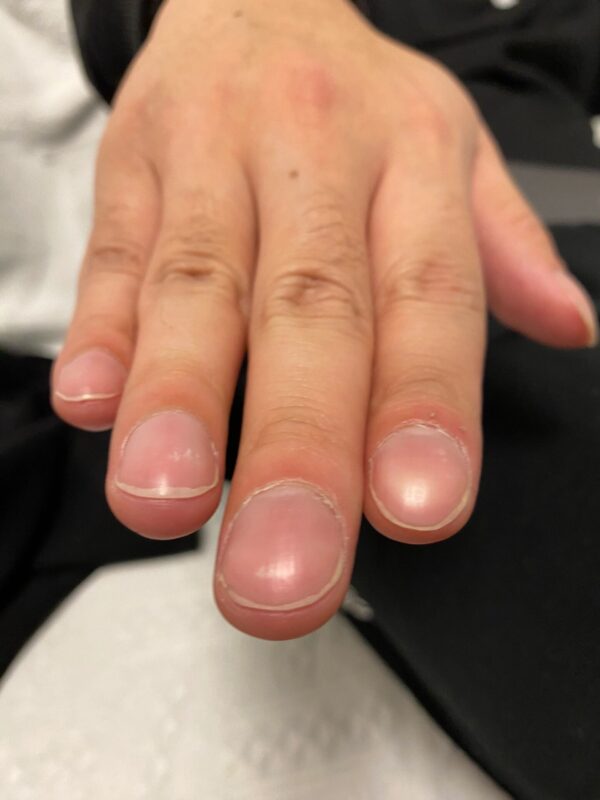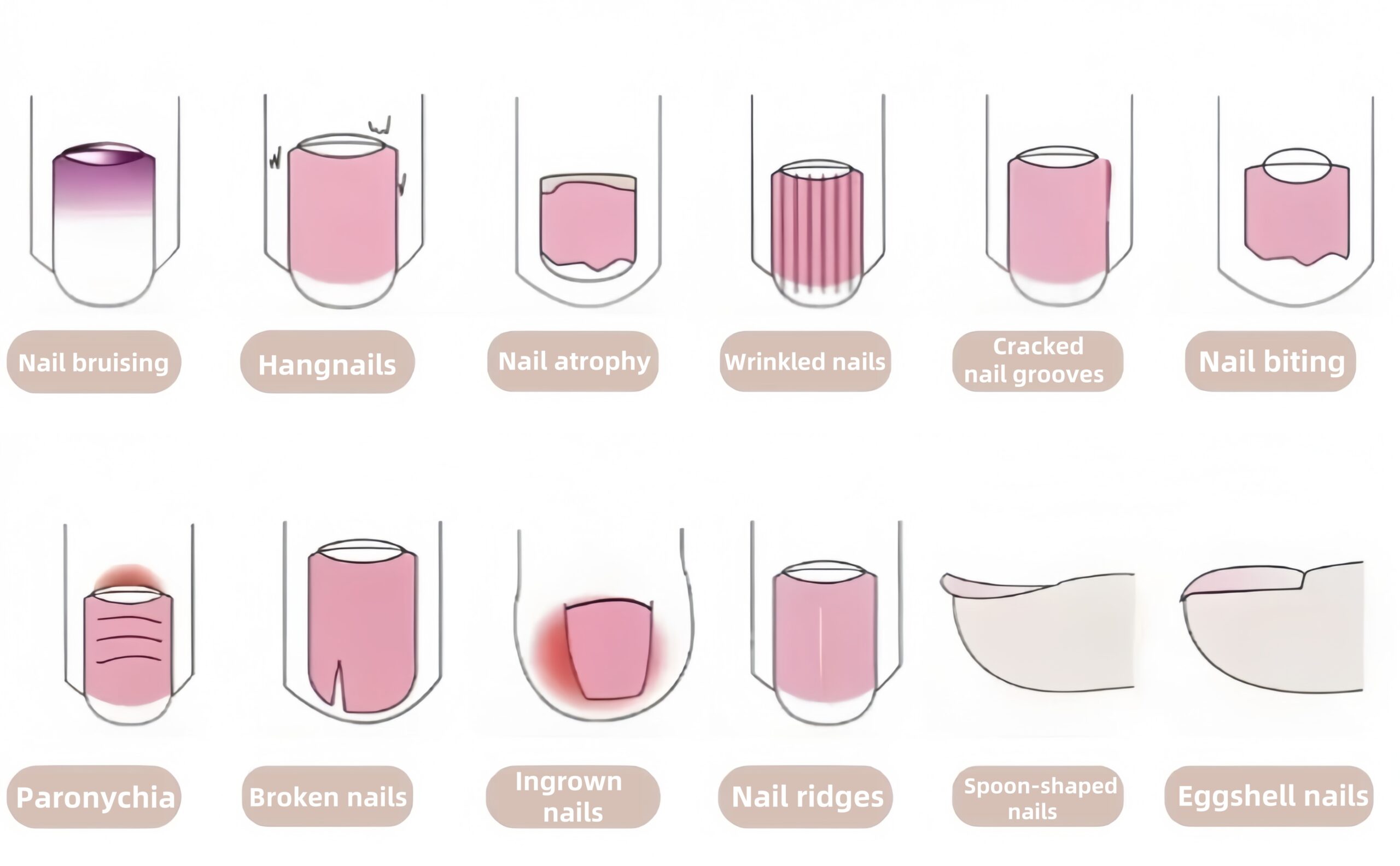Nail bruising refers to blood streaks or bluish-black spots under the nail. This condition is usually caused by impact, squeezing, or collision. Treatment:
- If the nail root or nail base is not damaged, the nail will grow normally and can be treated naturally. Apply dark color to cover the nail surface.
Nail bruising
- All manicure techniques are acceptable, but ensure that the spots are covered.
- If the nail is loose or inflamed, consult a doctor.

Nail cracking is primarily caused by prolonged exposure to harsh detergents, developers, highly alkaline soaps, and chemicals. Nail cracking can also occur if a manicurist is exposed to nail polish removers containing acetone and other harsh chemicals, improper cutting and filing, or due to finger injuries, arthritis, or other medical conditions.
Treatment Methods:
- Wear protective gloves during work to avoid prolonged chemical exposure.
- Applying an oil-based electric manicure or regular waxing can alleviate the problem.
- Carefully trim the cracked fingertips from both sides of the nail.
- Applying acrylic nails can change and prevent cracking.
- Consume more vegetables and cod liver oil rich in vitamins A and C.
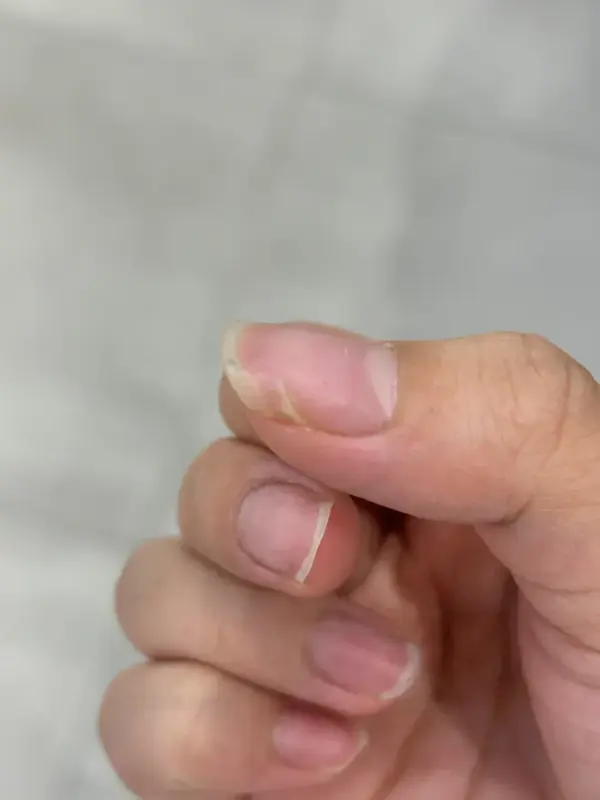
Nail spurs are caused by cracked cuticles, excess skin growth, or contact with harsh nail polish removers or detergents.
Treatment:
- If the nail root or nail base is intact, the nail will grow normally and can be repaired naturally. Apply dark nail polish to cover the nail surface.
Nail spurs
- To prevent infection from cracked cuticles, soak your hands in a soapy solution containing antiseptic. After hand care, apply an antibiotic ointment for optimal results.
- Apply an oil-rich moisturizer and gently massage with your hands.
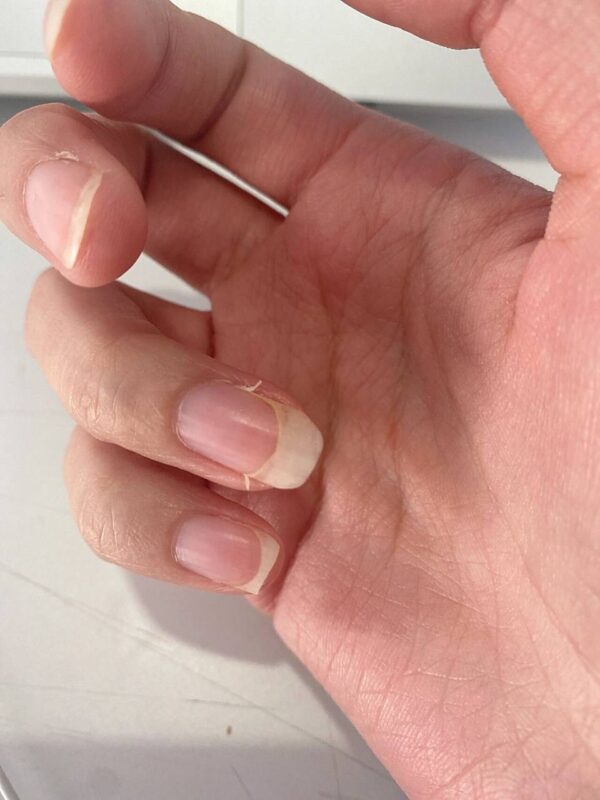
Nail atrophy occurs when frequent contact with chemicals damages the nail core and dulls the nail. In severe cases, the entire nail may fall off. Treatment:
- If nail atrophy is not severe, acrylic nails or phototherapy nails can be applied directly.
Nail Atrophy
- If nail atrophy is severe (the atrophy exceeds the upper 1/3 of the nail plate) and is accompanied by inflammation, the patient should be advised to seek medical treatment.
- If nail atrophy exposes the nail core, a residual nail repair method can be used, first creating the front edge of the nail, then applying acrylic nails.
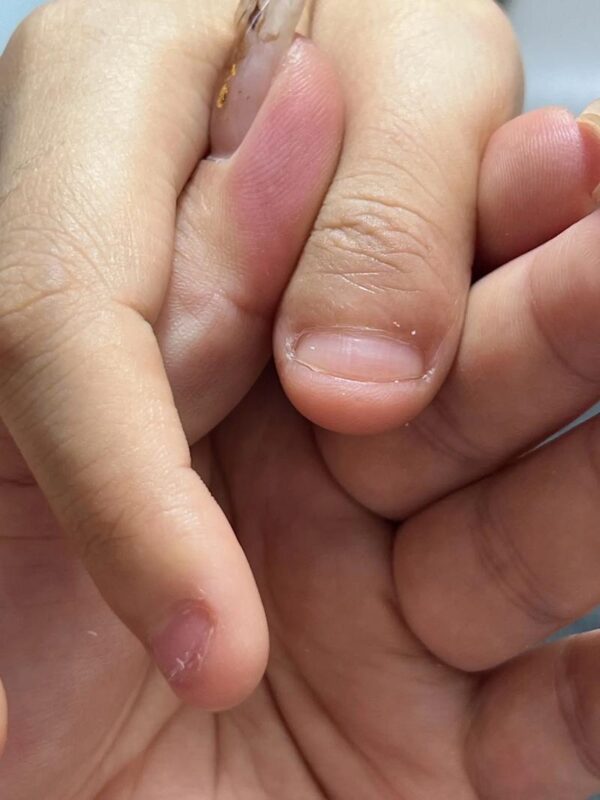
Nail wrinkling manifests as vertical lines on the nail surface, typically caused by illness, irregular dieting, smoking, and stress.
Treatment:
- For nail wrinkling, the nail surface is relatively dry. Regular nail care and proper rest and recuperation are recommended. This will alleviate the surface symptoms and generally do not affect the manicure.
- When performing a manicure, ensure that all uneven surfaces are carefully polished.
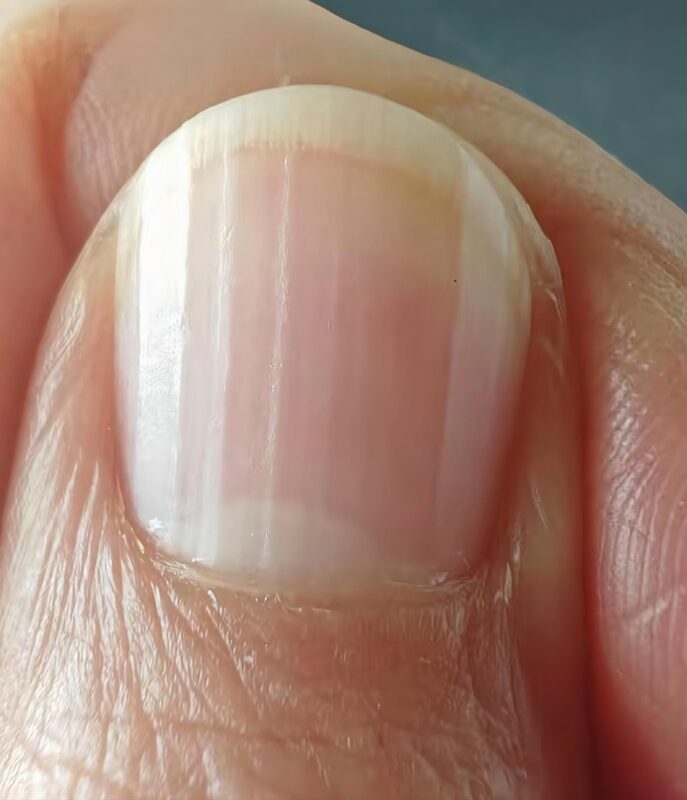
Nail cracking occurs when temperatures gradually drop in autumn and winter, leading to a decrease in skin gland secretion. The exposed areas of the hands and feet have a larger surface area for heat dissipation, causing the oil on the hands to evaporate rapidly, gradually causing cracks, bleeding, and other damage to the nail grooves.
Treatment:
Nail cracking
- Reduce hand washing frequency. After washing, dry with a soft, dry towel and apply a nourishing oil to protect the skin.
- Consume more foods rich in vitamin A, such as carrots and spinach.
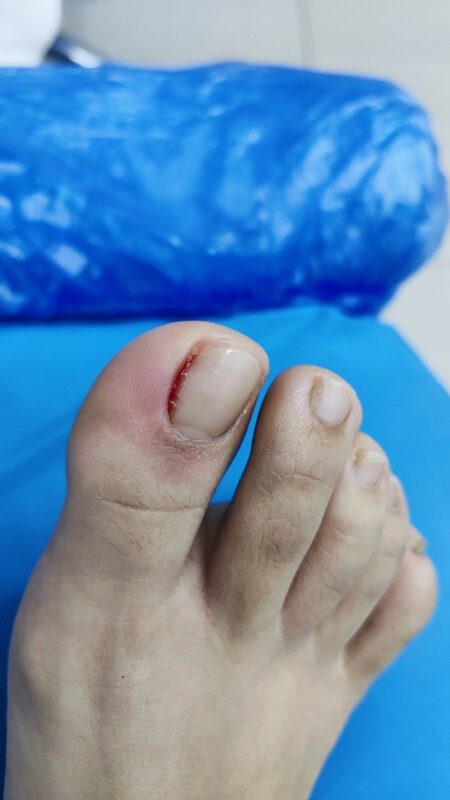
Nail biting is a bad habit, often caused by nervous tension.
Treatment:
- Carefully trim the front edge of the nails and perform a nourishing manicure.
Bitten fingernails
- Acrylic nails can beautify the nails and help break the bad habit.
- Encourage regular manicures and proper nail care.
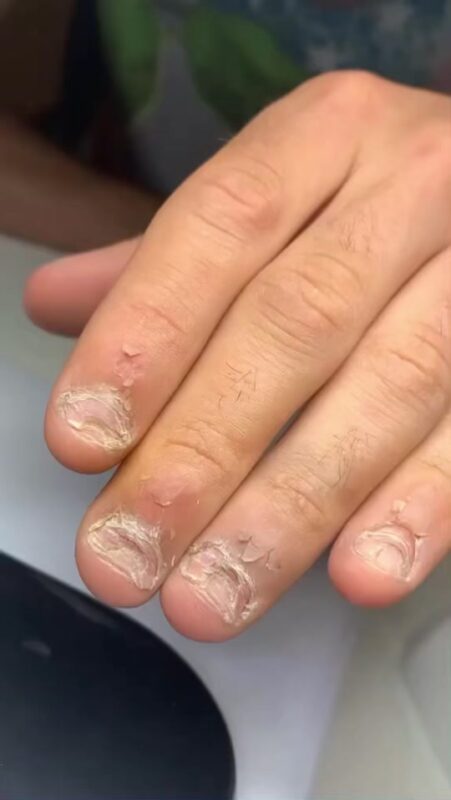
Paronychia is an infection that occurs in the nail groove, often caused by punctures, abrasions, ingrown nails, or nail spurs from nail extraction.
Treatment:
- Trim nails properly, trimming them into a square or rounded shape. Avoid trimming the corners. Otherwise, the newly grown nail can easily become embedded in the soft tissue.
Paronychia
- If the affected area has become purulent, disinfect and puncture the wound to allow the pus to drain, relieve pain, and apply a light antifungal ointment to the wound.
- In severe cases, seek medical attention immediately. Avoid manicures during periods of purulent or inflamed conditions.
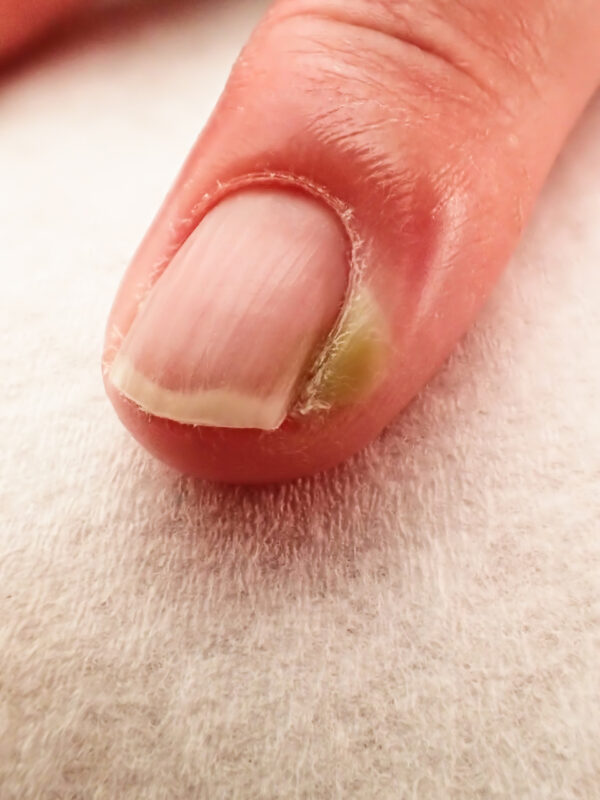
Ingrown toenails are a precursor to paronychia. They most commonly occur on toenails, primarily due to tight shoes or improper trimming. Long-term high-heeled shoes can increase pressure on the feet and cause nails to grow abnormally.
Treatment:
Ingrown toenails
- In this case, the patient should be advised to seek medical attention immediately.
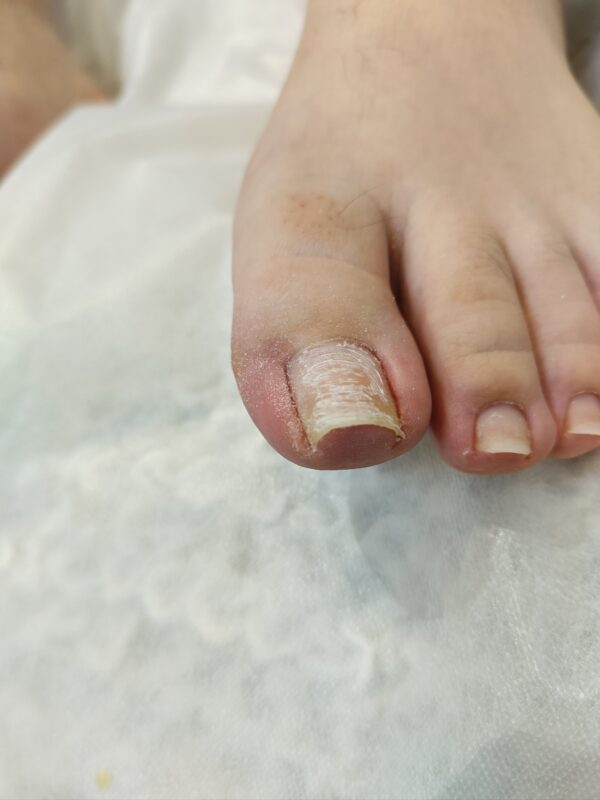
Nail ridges
Caused by nail disease or trauma, the nails are thick, dry, and have raised bumps on the surface. Buffing can restore the nail’s appearance.
Treatment:
- In this case, sand with an emery board or polish with a sponge file.
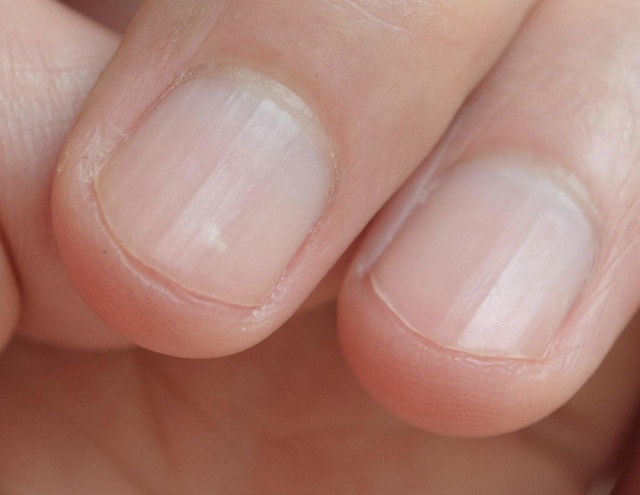
Spoon-shaped nails are a sign of calcium deficiency and malnutrition, particularly iron-deficiency anemia.
Treatment:
- Perform regular hand care.
- When getting nail extensions, trim the upturned front edge of the nail and fill in any indentations. Pay attention to the proper placement of the fingernail support.
Spoon-shaped nails
- Eat more mineral-rich foods such as green vegetables, red meat, and nuts (especially almonds).
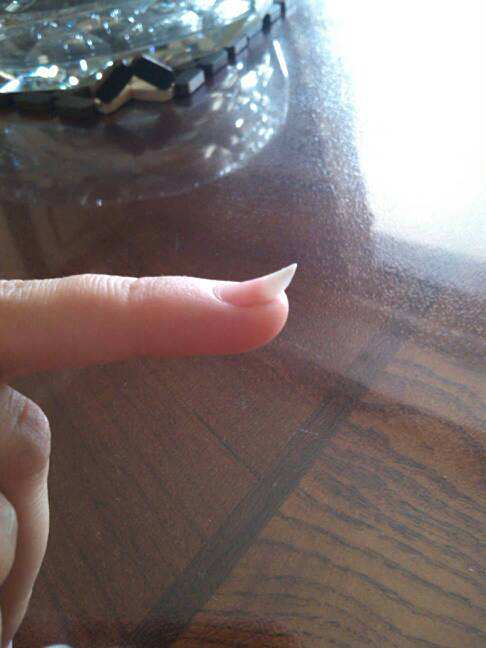
Clubbing nails, Nails are white, fragile, thin, and easily broken. The front edge of the nail often curves forward and is often burnt, with the nail core exposed or atrophied. The nail loses its luster.
Treatment:
- Perform regular basic nail care to strengthen and nourish the nails, increasing their hardness.
Eggshell-shaped nails
- Because the nails are curved and hooked forward, they are not suitable for nail tips and are only suitable for acrylic nails and gel nails.
- When applying acrylic nails or gel nails, gently push the cuticle but avoid using metal pushers. Use fine-surfaced sandpaper to avoid damaging the nail. When trimming the front edge of the nail, trim the sides first, then the center, to avoid breaking the nail.
- When applying the nail tips, avoid irritating the center of the nail.
